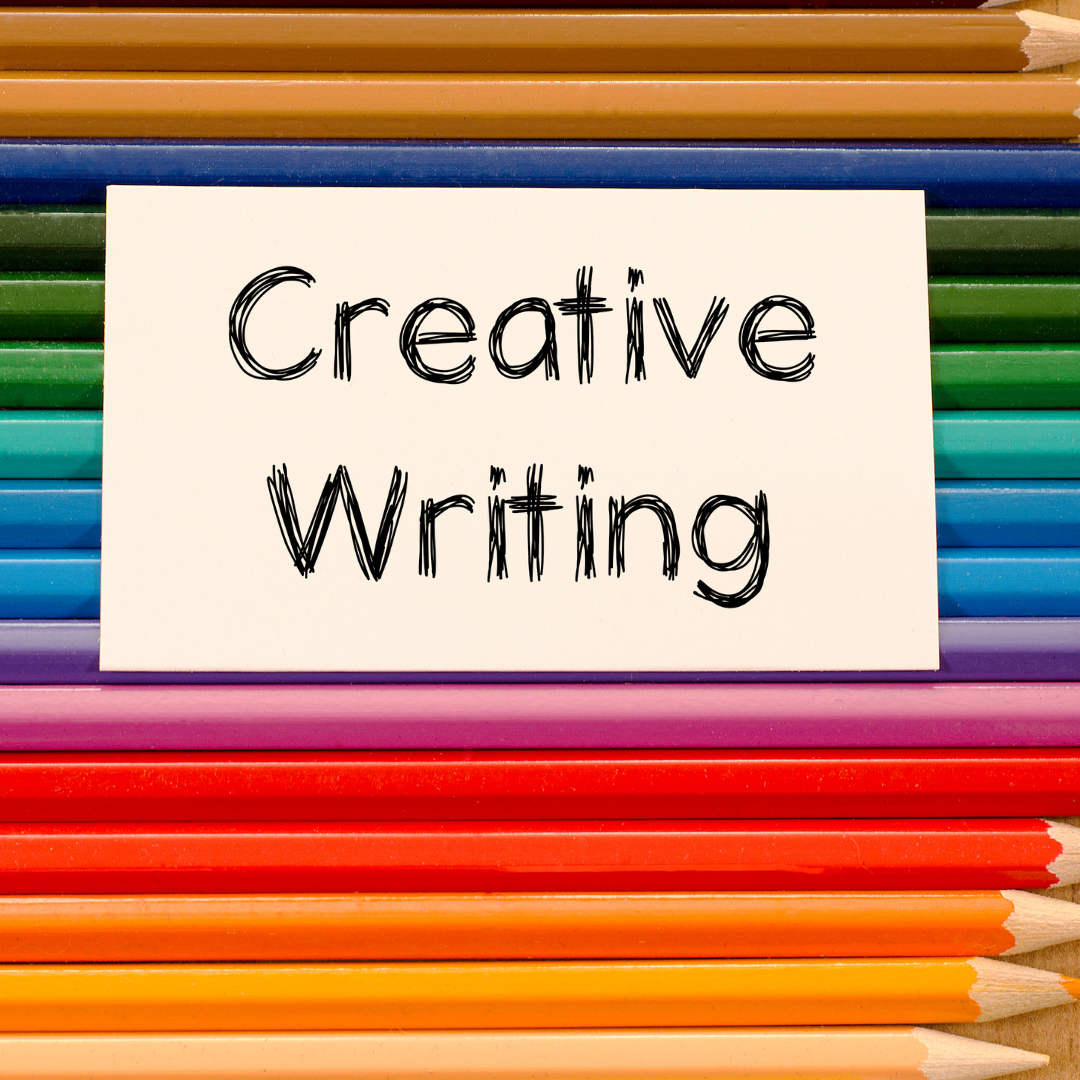A Guide To Creative Writing Tips For Students

A Guide To Creative Writing Tips For Students
Creative writing is a cornerstone of self-expression and imagination, offering students a unique platform to explore their inner worlds and articulate their thoughts and feelings innovatively.
Unlike the structured confines of academic writing, creative writing encourages freedom, allowing young writers to experiment with narratives, characters, and poetic forms.
Creative writing tips for students are essential to harness this potential fully, guiding them to navigate the expansive realm of imagination with skill and confidence.
This article will explore a treasure trove of creative writing tips to empower students to unlock their creative potential and refine their writing craft.
We will explore key strategies for enhancing creativity and expression, from finding one's voice and setting achievable writing goals to mastering the art of “show, don't tell” and navigating the intricacies of character development and setting.
Whether battling writer's block or seeking to add depth to your characters and stories, these tips are designed to guide and inspire students on their creative writing journey.

Understanding Creative Writing
Writing creatively is an art form that enables people to convey thoughts, feelings, and tales by using a variety of literary elements and narrative techniques.
It encompasses various genres, including fiction, poetry, drama, and non-fiction creative essays, each offering a unique storytelling and personal expression medium.
Creative writing encourages a more flexible and imaginative approach unlike other forms of writing that may adhere to strict factual accuracy or formal structures.
It invites writers to explore the depths of their creativity and convey their message engagingly and compellingly.
The distinction between creative and academic writing lies primarily in their purpose and structure.
Academic writing is distinguished by its formal tone, emphasis on objective analysis and arguments supported by evidence, and frequent targeting of a particular scholarly audience.
Its primary aim is to inform, explain, or persuade through structured reasoning and factual evidence.
Creative writing, on the other hand, prioritizes artistic expression, emotional depth, and narrative craft, often appealing to a broader audience's senses, emotions, and imagination.
While academic writing seeks clarity and precision in its exposition, creative writing celebrates the nuanced, the symbolic, and the subjective.
The role of creativity in personal and academic development cannot be overstated. Emphasizing creative writing tips for students can significantly bolster their personal growth and academic excellence by enhancing critical thinking, empathy, and communication skills.
It enhances empathy and emotional intelligence as writers explore complex character motivations and emotional landscapes.
Academically, the skills honed through creative writing, such as clear communication, persuasive storytelling, and critical analysis, are transferable across disciplines, enriching a student's ability to articulate thoughts and ideas effectively in various contexts.
Thus, creative writing is not merely an artistic endeavour but a multifaceted tool that fosters personal growth and academic excellence.
The Basics Of Creative Writing For Students
Creative writing is an invaluable skill for students, offering a unique and compelling way to express thoughts, emotions, and stories.
This guide provides a foundational understanding of creative writing, emphasizing the importance of finding one's voice, setting realistic goals, reading to write, and the mantra that practice makes perfect.
1. Finding Your Voice
Finding your voice is crucial in creative writing. It refers to developing a unique way of expression that reflects your personality, experiences, and worldview.
Authenticity and distinctive flair are the secrets to writing that stands out and connects with readers.
Discovering your voice involves trial and error, writing frequently, and being true to yourself. It's about letting your real-life experiences, thoughts, and emotions influence your work, enabling you to craft stories only you can tell.
Embracing your voice gives your writing authenticity and depth, essential for connecting with your audience.
2. Setting Realistic Goals
Setting realistic goals is fundamental to nurturing your creative writing journey. Goals can be short-term, like writing a certain number of words daily, or long-term, like completing a novel within a year.
Achievable milestones, like finishing a short story or submitting work to a magazine, provide motivation and a sense of accomplishment.
These objectives should challenge you but remain attainable, helping you to progress steadily without feeling overwhelmed.
Balancing ambition with practicality encourages consistent writing and growth, ensuring you build confidence and skills.
3. Reading To Write
Reading widely is indispensable for any writer. Incorporating a diverse reading habit is among students' most impactful creative writing tips, directly influencing their capacity to innovate and articulate in their writing endeavours.
It exposes you to different styles, genres, and voices, enriching your understanding of language and storytelling.
Reading gives you insights into character development, plot structuring, and thematic exploration, which can inspire and inform your writing.
Moreover, reading challenges your perspectives and stimulates creativity, making it a powerful tool for improving your writing skills.
4. Practice Makes Perfect
Like any other skill, writing improves with practice. Regular writing exercises and discipline are essential for honing your craft.
Whether it's daily journaling, participating in writing prompts, or working on a piece of fiction, consistent practice helps you overcome challenges, such as writer's block, and develop a fluent, versatile writing style.
It's also an opportunity to experiment with different genres and techniques, finding what works best for you.
Remember, every great writer started somewhere, and the dedication to regular practice transforms good writers into great ones.
Techniques To Enhance Creative Writing
Developing one's creativity is essential for everyone who wants to be a writer since it gives stories life and stimulates the imagination.
Acquiring proficiency in creative writing demands more than merely knowing syntax and structure; it calls for methods that pique readers' interest, foster creativity, and enhance stories.
Students can use various strategies to unleash their creativity and turn their ideas into engaging stories to overcome these obstacles and improve their writing.
The following four strategies are the best ones for helping students improve their creative writing:
1. Freewriting And Brainstorming
Freewriting and brainstorming are pivotal techniques for unlocking creativity and combating the common adversary of writers: the block.
Freewriting involves setting a timer and writing nonstop, allowing thoughts to flow without censorship or concern for grammar, structure, or coherence.
This process liberates the mind, enabling the subconscious to surface ideas and connections that conscious filtering might suppress.
On the other hand, brainstorming can be a structured approach where writers list ideas, words, or phrases related to a central theme or story they wish to develop.
Both techniques warm up the creative muscles, often leading to unexpected plots, characters, or themes that can be honed into structured pieces.
For students, these exercises encourage a mindset where all ideas are valued, fostering a creative environment ripe for innovation.
2. Show, Don’t Tell
“Show, don’t tell” is a cornerstone technique of creative writing that urges writers to convey stories through vivid description and action rather than exposition.
This approach draws readers into the experience, allowing them to see, hear, feel, and taste the world of the story.
Instead of stating, “The night was tense,” a writer might show this tension through clenched fists, shallow breaths, and the eerie silence of a darkened room.
For students, mastering this technique involves practicing sensory writing, focusing on how scenes affect the characters physically and emotionally.
This enriches the narrative and deepens the reader's engagement and empathy for the characters.
3. Character Development
Creating compelling and believable characters is crucial for engaging the reader and driving the narrative forward.
Effective character development involves understanding characters’ motivations, backgrounds, and personalities.
Students should consider their characters' flaws, fears, desires, and secrets, as these nuances add depth and realism.
Developing a character biography can be helpful, detailing everything from a character’s favorite books to their most guarded memories.
This doesn't mean all details will make it into the story, but such depth informs the writer's portrayal, creating consistent and believable interactions and reactions.
Encouraging students to “interview” their characters or place them in various scenarios outside the story can further aid in exploring and solidifying their characters' traits and growth.
4. Setting and Atmosphere
Among creative writing tips for students, mastering the art of setting and atmosphere is crucial for bringing their stories to life and fully engaging the reader's senses.
A story's setting and atmosphere are not just backdrops but integral components that influence the narrative's mood, tone, and direction.
Crafting engaging and vivid settings involves more than describing a location; it's about creating a world that feels alive and influences the story's events and characters.
Students should consider how the setting impacts the plot and character development, using sensory details to bring environments to life.
The atmosphere can amplify emotions and tension, whether it’s the stifling heat of a crowded city or the oppressive silence of a snow-covered forest.
Exercises focusing on describing settings from different characters' perspectives can help students understand the setting's role in shaping the narrative and emotional landscape.
Tools & Resources For Creative Writers
In today’s digital age, many tools and resources are available to assist creative writers in honing their craft, managing their projects, and connecting with like-minded individuals.
These aids range from software and apps designed to streamline the writing process to online communities that offer support and feedback.
Additionally, workshops, courses, and webinars provide structured learning opportunities for writers at all levels. These resources can be invaluable to creative writers, especially students eager to develop their skills.
1. Writing Software And Apps
Software and apps like Scrivener, Ulysses, and Google Docs offer features tailored to writers' needs, including organizational tools, distraction-free writing environments, and cloud storage for easy access across devices.
Scrivener, for example, is renowned for managing complex writing projects, offering corkboard and outlining features that help writers keep track of research, plotlines, and character arcs.
Similarly, apps like Grammarly and Hemingway App provide real-time grammar and style suggestions, making editing more efficient and helping writers improve their craft.
2. Online Communities And Forums
Online platforms such as Reddit’s r/writing, Wattpad, and Scribophile offer spaces for writers to share their work, receive critiques, and find encouragement.
These communities are invaluable for feedback, networking, and discovering new writing opportunities, such as contests and collaborations.
Participation in these forums can also demystify the writing process as members share their experiences, challenges, and solutions.
3. Workshops, Courses, And Webinars
Participating in workshops, courses, and webinars is among the essential creative writing tips for students, offering them a pathway to rapid skill development and insight into the writing profession.
These resources often provide direct access to accomplished authors and industry professionals, offering insights into the publishing world and practical advice on improving one’s writing.
These learning opportunities can significantly accelerate a writer's development, providing structured guidance and exposure to diverse writing styles and approaches.
For student writers, navigating these tools and resources effectively can open up new avenues for creativity, skill enhancement, and community engagement, enriching their writing journey with knowledge, inspiration, and support.
4. Overcoming Challenges In Creative Writing
Overcoming challenges in creative writing is a pivotal part of every writer's journey, shaping their work, resilience, and growth as artists.
Effective creative writing tips for students address overcoming these challenges, fostering resilience and ensuring continuous growth and development in their writing journey.
Among the myriad hurdles, dealing with criticism and rejection, staying motivated, and navigating writer's block are particularly formidable.
5. Dealing With Criticism And Rejection
Criticism and rejection are inevitable aspects of the creative writing process, serving as both a challenge and an opportunity for growth.
It's essential for writers, especially students and newcomers to the field, to develop a healthy perspective toward critique.
Rather than viewing it as a personal attack, it's beneficial to see criticism as a valuable tool for improvement.
Learning to separate oneself from the work allows writers to assess feedback objectively, identifying valid points to enhance their writing.
Rejection, while disheartening, is not a reflection of one's worth as a writer but rather a step in the journey towards publication and recognition.
Embracing rejection as part of the learning curve can help writers build resilience, refine their craft, and persevere in their creative endeavours.
6. Staying Motivated And Dealing With Writer's Block
Maintaining motivation and overcoming writer's block are ongoing challenges in the creative process.
Motivation can wane under the weight of daily responsibilities, self-doubt, or the sheer effort writing demands.
Setting achievable goals, celebrating small victories, and reminding oneself of the joy and fulfillment writing brings can rekindle motivation.
Creating a routine and dedicating a specific time and place for writing can also foster discipline and focus, making writing a habitual and anticipated part of one's day.
Writer's block, the infamous barrier to creativity, afflicts even the most experienced writers.
Strategies to overcome it include stepping away from the work to gain a fresh perspective, engaging in alternative creative activities to stimulate the mind, and simplifying the task by focusing on small, manageable work sections.
Freewriting, setting non-critical writing exercises, and changing one's environment are practical techniques to bypass mental blocks and re-engage with the creative flow.
Ultimately, overcoming these challenges requires a blend of self-compassion, persistence, and a willingness to grow.
Recognizing that setbacks are integral to the creative process allows writers to navigate these hurdles resiliently, continually moving forward in their artistic journey.
Experimental Writing Exercises
Experimental writing exercises can dramatically enhance a student's creativity and storytelling abilities.
These exercises challenge conventional writing habits, pushing students to explore their narratives uniquely. Here are three distinctive approaches:
1. Writing In The Dark
Exploring the technique of writing in the dark is a unique creative writing tip for students, aimed at enhancing sensory perception and emotional depth in their storytelling.
This exercise encourages students to focus on what they feel, hear, and imagine rather than see.
Without the usual reliance on sight, writers become more attuned to their internal landscapes, allowing for a more profound connection with their stories' emotional and sensory details.
This method can lead to surprising discoveries about characters, settings, and plot developments, as the darkness encourages a form of narrative intuition that might remain untapped in well-lit environments.
2. Role-Reversal Storytelling
Adopting role-reversal storytelling is one of students' most powerful creative writing tips, fostering empathy and narrative depth by exploring diverse character perspectives.
This exercise challenges writers to leave their comfort zones and view their stories differently. Students can uncover new narrative dimensions by adopting another character's viewpoint, especially an antagonist, deepening its complexity and enriching the character dynamics.
This practice enhances empathy and understanding of different perspectives and uncovers potential plot lines and motivations that may have been overlooked.
3. Music And Mood Creation
Leveraging music for mood creation emerges as a compelling creative writing tip for students, fostering an immersive environment that enriches their narrative's emotional landscape.
Encouraging students to use music to set the tone for their writing sessions can open new avenues of creativity.
Tailoring playlists to evoke specific emotions or settings can help writers immerse themselves more deeply into the atmosphere of their stories.
For instance, listening to stormy, dramatic music can enhance the writing of a tense, climactic scene, while soft, melancholic melodies might inspire deeply introspective passages.
These experimental writing exercises encourage students to explore and expand their creative boundaries, using unconventional methods to enrich their storytelling skills.
Each exercise offers a pathway to deeper narrative engagement, character development, and sensory immersion, fostering a more vibrant and nuanced approach to creative writing.
Conclusion
In the journey of creative writing, students are invited to explore the vast landscapes of their imagination, harnessing the power of words to breathe life into ideas, emotions, and worlds yet undiscovered.
These creative writing tips for students serve as a compass in their journey, guiding them toward realizing their full imaginative potential and crafting stories with authenticity and depth.
Remember, the path of creative writing is one of exploration and perseverance; it's about finding joy in the process as much as in the outcome.
Let these tips serve as a beacon, guiding you through the exhilarating storytelling journey.
Embrace each word, each story, as a step toward not only becoming a better writer but also discovering more about yourself and the world around you.
I trust you enjoyed this article about A Guide To Creative Writing Tips For Students. Please stay tuned for more articles.
Take care!
JeannetteZ
Want to Learn How to Build Your Own Home-Based Online Business and Start Making Money Online From Your Comfortable Couch?
Try Wealthy Affiliate!

Your Opinion Is Important To Me
Do you have thoughts, ideas, or questions? I would love to hear from you. Please leave me your questions, experiences, remarks, and suggestions about A Guide To Creative Writing Tips For Students in the comments below. You can also email me at Jeannette@WorkFromAnywhereInTheWorld.com.
Disclosure
This post may contain affiliate links. I earn from qualifying purchases as an Amazon Associate and other affiliate programs. Please read my full affiliate disclosure.
You may also enjoy the following articles:
Wealthy Affiliate Review – Scam or Legit? The Truth Exposed
How To Motivate Yourself For Blogging
How To Write The Best Catchy Headlines






